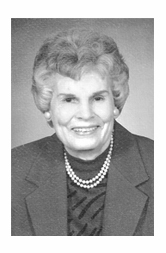Although I have been aware of manufacturing companies in Cardington, I had never read about the Cardington Canning Company. This company, organized in 1901, operated only during the sweet corn and tomato season.
It began with a capital o $10,000, all of which was subscribed by “home people.” The company had a plant along te Big Four tracks and it was “fitted up with everything that is modern in the way of devices for the handling of the various products of plant.” The company had “put up” tomatoes, peaches, pumpkins, pears, apples and plums” although the principal lines were corn and tomatoes.”
At that time, it was noted that “many farmers have realized as high as $35 an acre from their corn and as high as $40 an acre in tomatoes.”
The officers at that time were Otho Curl, president; P. B. Purvis, vice presi- dent; E. M. Willits, treasurer and J. W. Shaw, secretary and general manager.
The company closed shortly after 1911.
Among the many other businesses in the village in 1911 was the H. C. Long Handle Company which opened that year, employed 15 men in the making of fork handles. The Cardington Cement Tile and Block Company had a force of seven, making cement blocks and tile. In addition, the Russell hay barn employed a number of men in baling hay.
There was the John Loeffort Cigar Company, newly organized in 1911, who made cigars on a large scale. We don’t want to forget one of the most popular and well known factories, the J. S. Peck and Son furniture factory.
One of the newest factories in the village in 1911 was the Cardington Cabinet Company which made a line of ice cream freezers and the Ohio Stave Company employing people who mare barrel hoops, moving here from Marysville in 1906.
Cardington boasted five hardware stores, two dry goods stores, four groceries, department and clothing stores, jewelry store, three shoe stores, two barber shops, two drug stores, furniture store, three millinery (hat) stores, a tailor shop, two bakeries, two insurance and two harness shops.
There were real estate agencies, five restaurants, three auto garages, a hotel, laundry, two livery barns, four blacksmith shops, two photograph galleries, sewing machine agency, a notion store and fruit store. This village lacked for nothing for its citizens!
This story was summed up by the writer saying “Nowhere in the state of Ohio can a finer lot of business men be found than in Cardington.
80 years ago, 1940: A 2.75 acre tract on Chesterville Avenue was purchased by Mary Etta Hack for $210. Mary Lou Rhineberger, a Cardington native and a violinist, was accepted as a member of the Columbus Philharmonic orchestra.
70 years ago, 1950: Cardington Kroger store manager Lester Baker, was drafted into the U. S. Army.
60 years ago, 1960: The 15th child of Mr. and Mrs. L. T. Etgen, a son, born October 1, of rural Cardington, was baptized in St Joseph’s Catholic Church. David Paul Etgen joined eight brothers and sisters at home. Four other siblings were married. One sister worked in Columbus. One brother died in infancy.






